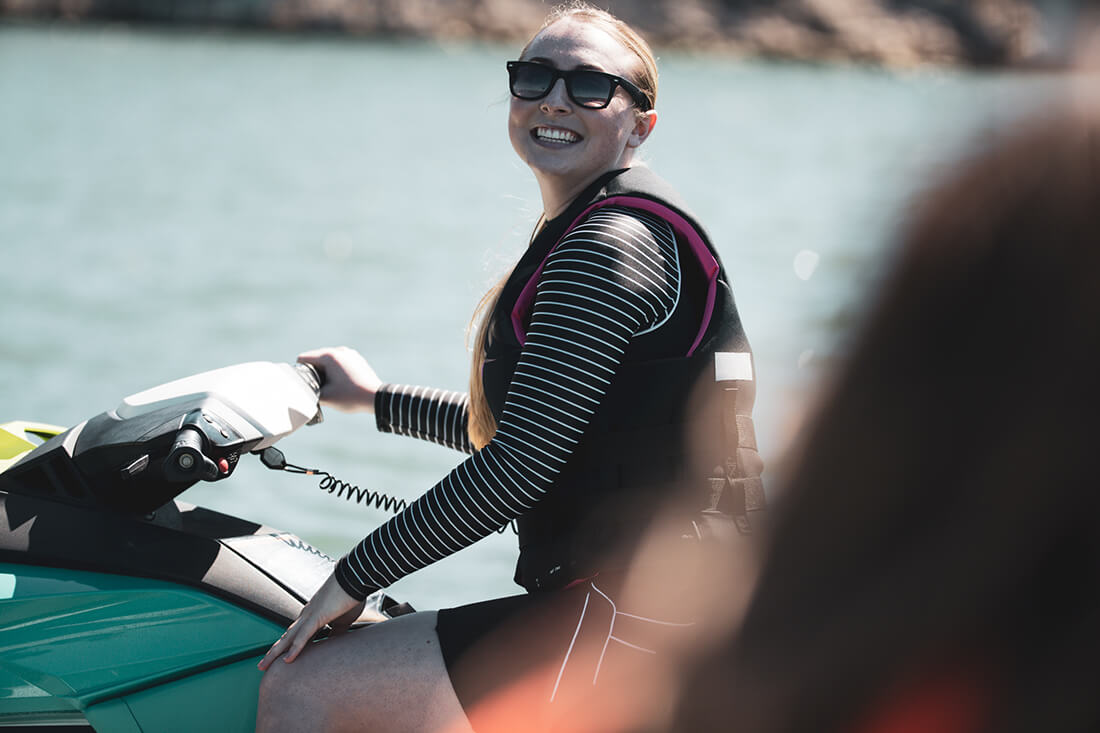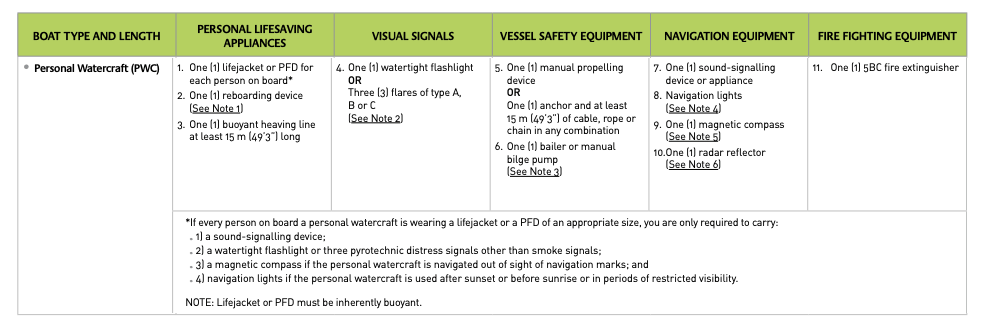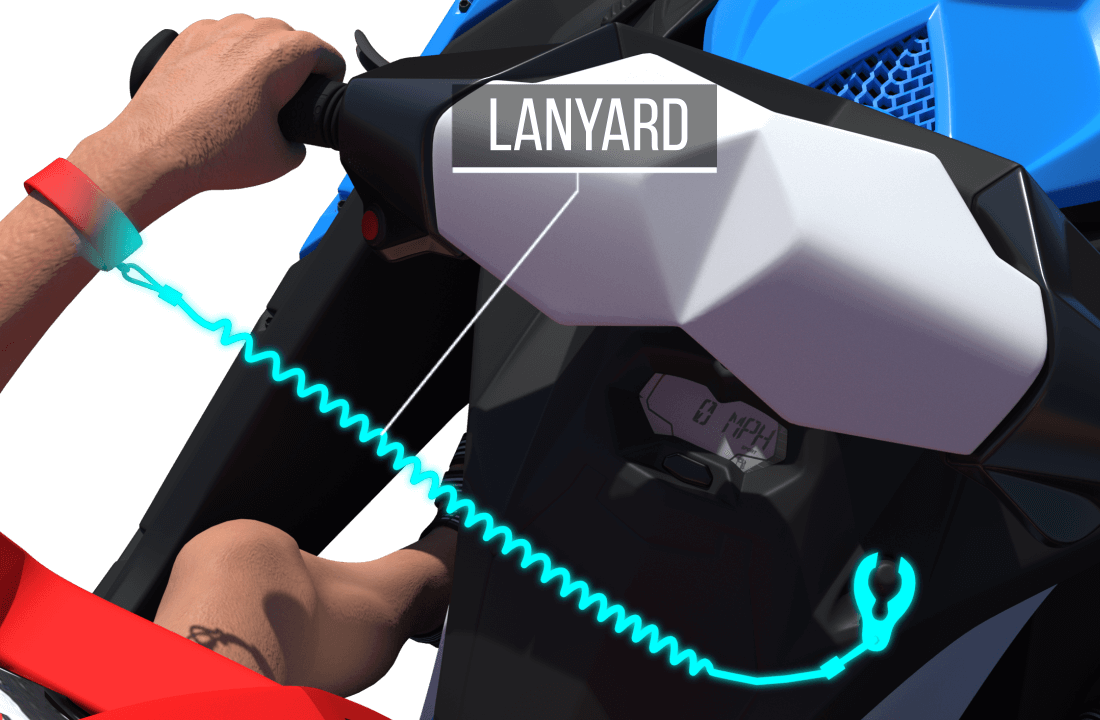What is a personal watercraft?

A Personal Watercraft (PWC) is a small, motorized watercraft designed for individual or small-group recreation on the water. Unlike traditional boats, where the operator sits inside the vessel, a PWC is typically ridden on top, similar to a motorcycle on water. The rider steers using handlebars and controls acceleration through a hand throttle. Commonly recognized brands include Jet Ski® (Kawasaki), Sea-Doo® (BRP), and WaveRunner® (Yamaha) — names often used generically to describe all types of personal watercraft.
PWCs are known for their speed, maneuverability, and fun factor, making them one of the most popular recreational boats in North America. However, they also require skill, awareness, and respect for boating laws to ensure safe operation.
1. How a Personal Watercraft Works
A PWC is powered by an inboard engine that drives a jet propulsion system. Instead of using a traditional propeller like a motorboat, it takes in water through an intake grate, accelerates it with an impeller, and forces it out through a nozzle at the stern. This high-pressure water jet propels the craft forward and allows the rider to steer by directing the nozzle’s angle.
Because of this jet drive system, PWCs can operate in shallower waters than propeller-driven boats, reducing the risk of hitting submerged objects. However, they can still cause environmental impact if operated too close to shore or in sensitive habitats.
The absence of an exposed propeller makes PWCs safer around swimmers and other water users, but the jet thrust can still be powerful enough to cause injury if misused.
2. Types of Personal Watercraft
There are two main categories of PWCs:
A. Sit-Down PWCs
-
These are the most common models today.
-
Designed for one to three riders, who sit on the saddle-like seat.
-
Often used for recreation, towing tubes, or light cruising.
-
Examples include the Sea-Doo GTI, Yamaha VX Cruiser, and Kawasaki STX.
-
Stable, comfortable, and great for families or beginners.
B. Stand-Up PWCs
-
The original style of PWC, designed for one rider who stands during operation.
-
Smaller, lighter, and more maneuverable, but require greater balance and skill.
-
Popular for tricks, racing, and sport riding.
-
Examples include the Yamaha SuperJet and Kawasaki SX-R.
While stand-up models appeal to thrill-seekers, most recreational riders prefer sit-down PWCs for comfort, versatility, and ease of use.
3. Common Uses of Personal Watercraft
PWCs are incredibly versatile and can be used for a range of activities:
-
Recreational Riding: The most common use — simply exploring, playing, or cruising on the water.
-
Watersports: Many modern PWCs are powerful enough to tow water skiers, wakeboarders, or inflatable tubes.
-
Rescue Operations: PWCs are used by lifeguards and marine patrols due to their speed and ability to reach victims quickly in shallow or surf zones.
-
Fishing: Some models are adapted for angling, equipped with rod holders, GPS, and coolers.
-
Tourism and Rentals: PWCs are popular rental vehicles at resorts and coastal destinations.
No matter the purpose, all riders are required by law to follow boating regulations and operate responsibly.
4. Safety Equipment and Requirements
Although PWCs are smaller than most boats, they are still considered power-driven vessels. This means operators must follow the same safety rules that apply to larger boats.
Essential safety equipment includes:
-
Approved Personal Flotation Device (PFD) for each rider.
-
Sound-signaling device (e.g., whistle or horn).
-
Manual propelling device (like a paddle) or anchor (depending on jurisdiction).
-
Watertight flashlight if operating after sunset (though night use is often restricted).
-
Reboarding device, such as a step or grab handle.
-
Engine cutoff lanyard (kill switch) — must be attached to the operator’s wrist or PFD.
In Canada, all PWC operators must carry proof of competency, such as a Pleasure Craft Operator Card (boating licence), and must be at least 16 years old to operate a PWC legally.

5. Safe Operation Practices
Operating a personal watercraft safely requires understanding its power and limitations. PWCs can accelerate quickly, turn sharply, and reach speeds over 100 km/h — features that make them exciting but also potentially dangerous.
Here are key safety guidelines:
-
Always wear your PFD and attach the engine cutoff lanyard.
-
Keep a safe distance from swimmers, docks, and other vessels (at least 30–50 meters).
-
Operate in daylight and good visibility; night use is often prohibited.
-
Avoid wake jumping near other boats.
-
Never operate under the influence of alcohol or drugs.
-
Be mindful of your surroundings — PWCs have no brakes, so releasing the throttle reduces steering ability.
Training and experience are critical. Many boating safety courses include a section specifically for PWC operation, covering maneuvering, right-of-way rules, and environmental awareness.

6. Environmental Considerations
Modern PWCs are cleaner and quieter than earlier models, but they can still affect aquatic ecosystems if misused. Responsible riders should:
-
Avoid operating in shallow waters (less than 30 cm deep) to prevent stirring up sediments that harm fish and plants.
-
Stay clear of wildlife habitats and nesting areas.
-
Refuel carefully on shore to avoid fuel spills.
-
Use eco-friendly lubricants and fuels when possible.
By following these practices, PWC users can help preserve the natural beauty and health of waterways for everyone.
7. Understanding Navigation Rules
PWCs follow the same navigation rules as other vessels. Operators must know:
-
Right of Way: A PWC is a power-driven vessel and must yield to non-motorized craft (like canoes or sailboats under sail).
-
Overtaking: When passing another boat, stay well clear and avoid crossing its wake too closely.
-
No-Wake Zones: Slow to idle speed in areas marked for reduced wash, such as near marinas, docks, and swimming zones.
-
Speed Limits: Many lakes and rivers have posted speed restrictions — obey them at all times.
8. Maintenance and Care
Like any motorized vessel, a PWC requires regular maintenance to stay safe and reliable. Key tasks include:
-
Flushing the engine with fresh water after use in salt or dirty water.
-
Checking oil and coolant levels before each ride.
-
Inspecting the hull, intake grate, and impeller for debris or damage.
-
Storing properly — keep it covered, on a trailer or lift, and drain any water before winter storage.
Routine maintenance not only extends the life of your PWC but also prevents breakdowns and environmental leaks.